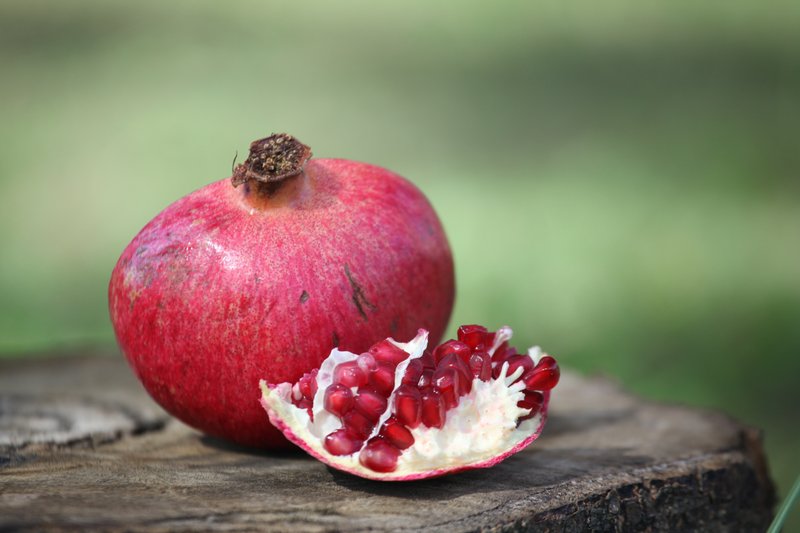A sure sign of fall, pomegranates start showing up at the tail end of summer, with a season that extends into the start of winter.
Many cooks shop for "perfect-looking" fruit, but the best fruit is often ugliest in appearance. Look for fruit that is heavy for its size; cracks are just fine. "It shows how ripe they are — they're bursting with flavor," says Amelia Saltsman, author of The Santa Monica Farmers Market Cookbook and a Los Angeles Times contributor.
One of the varieties just coming into season is the Spanish Sweet pomegranate. The sweet, low-acid fruit is yellow with a light blush on the skin and is prized for its sweet, almost translucent arils and soft seeds. (What we generally think of as the edible part of the pomegranate seeds is, technically, two things: a seed surrounded by a juicy little bit called an aril.)
After you bring pomegranates — any variety — home, store the fruit in the refrigerator until you're ready to use it, recommends Gina Swerdloff of Burkart Organics.
If you've gone wrong with pomegranates in the past, calm yourself with the knowledge that there is a foolproof way to shuck all the arils out without looking like a character at the end of a Quentin Tarantino film. My favorite is cutting off the flower tip of the fruit to expose the arils and scoring the skin into sections. Place the fruit in a bowl with water to cover, and work the fruit underwater. Gently dislodge the arils from the leathery skin and membrane. The arils will sink while most everything else floats to the top.
Most of the pomegranate seeds I harvest end up getting eaten without flourish: as a snack, downed by the handful. When mealtime comes around, you'll find that they can be profitably added to just about any salad — one of Saltsman's favorite dishes is an autumn salad pairing pomegranate arils with sliced persimmon, pecans, and celery or fennel, all of which are crowding up the market right now. If you'd like to really build a dish that lets the pomegranate shine in its sweet-tart complexity, apprentice yourself to the Pueblan specialty called chiles en nogada — roasted, stuffed poblano chiles in a rich walnut sauce crowned with a sparkling finish of fresh pomegranate seeds.
Food on 11/21/2018
